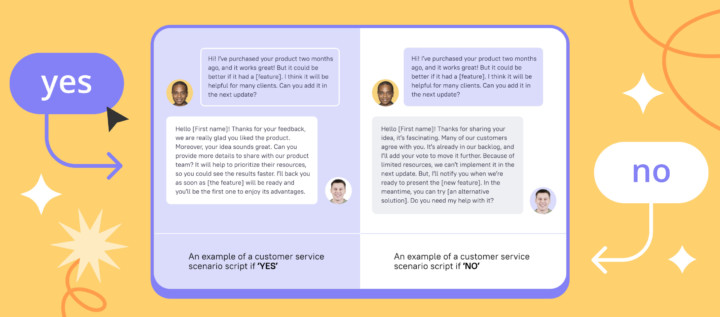How to create an effective omnichannel ecommerce strategy: A step-by-step guide

Introduction
In the competitive landscape of modern retail, businesses are increasingly realizing the necessity of adopting an omnichannel commerce strategy. This approach integrates various shopping channels — online, mobile, and physical stores — into a cohesive customer experience, reflecting the diverse ways consumers interact with brands today.
As digital platforms continue to dominate shopping journeys, the importance of seamless transitions between these channels cannot be overstated. Retailers that harness the power of omnichannel strategies not only enhance customer satisfaction but also unlock new sales opportunities and gather valuable insights into consumer behavior.
This article explores the following topics:
1. The definition and significance of omnichannel commerce
2. The benefits it offers for eCommerce success
3. The steps necessary to develop a robust strategy
4. Addressing the technological and operational challenges that may arise along the way
Understanding omnichannel commerce: Definition and importance
Omnichannel ecommerce is not just a buzzword; it’s a necessity in today’s retail landscape. Think of it as a sales strategy that creates a seamless shopping experience across all platforms — whether that’s online, through mobile apps, or in brick-and-mortar stores. Consumers today are savvy; they engage with brands in multiple ways. If you’re not integrating these channels, you’re missing a huge opportunity to boost customer engagement and satisfaction.
According to Klarna’s Shopping Pulse report, most shopping journeys kick off online. Many consumers do their homework before stepping foot in a store. Picture this: a shopper is in your store, but they’re using their smartphone to compare prices. If you’re not prepared for that, you’re essentially handing your business over to your competition. With mobile commerce projected to hit 28.9% by 2025, neglecting mobile strategies in your omnichannel approach is akin to leaving money on the table.
Understanding customer interactions and preferences is critical. Statistics show that 60% of consumers have walked away from businesses due to long wait times for support. Zia Daniell Wigder, Chief Content Officer, puts it bluntly: offering an omnichannel shopping experience isn’t a luxury anymore; it’s a requirement. Retailers need to rethink their strategies to enhance both online and in-store experiences. This isn’t just about keeping up; it’s about fostering loyalty in a world where consumer expectations are constantly shifting.

The benefits of an omnichannel strategy for eCommerce success
You want to succeed in eCommerce? Then you need to get your omnichannel strategy right. Here’s why a unified approach is not just a nice-to-have, but a must-have.
- Improved Client Experience: Think of your customers like a river. They flow through various channels — online, in-store, social media — and they expect a smooth ride. Klarna’s Shopping Pulse report shows that by 2024, 83% of shoppers will research online before stepping into a store. If you don’t provide a seamless experience, you’re creating unnecessary rapids that can turn potential buyers away.
And let’s talk about social media. There’s been a 27% jump in people reaching out for help via direct messages from 2022 to 2023. This isn’t just a trend; it’s a signal. Your customers want quick, responsive support across all platforms.
Increased sales opportunities: When you engage customers through multiple touchpoints, you’re not just casting a wider net; you’re fishing in a deeper pond. Take Buy Online, Pick Up In Store (BOPIS) as an example. Nearly half — 47% — of consumers say they end up buying more when they pick up their online orders. This isn’t just a chance to make a sale; it’s a chance to create loyal customers who keep coming back.
Enhanced data insights: A multi-channel approach isn’t just about selling; it’s about understanding. More channels mean more data, and that data is gold. It reveals consumer behaviors and preferences that can inform your strategy and help you stay ahead of the competition.
Higher conversion rates: You want to increase your conversion rates? Streamline your processes and personalize the customer experience. Google’s data shows that integrated strategies can boost store visits by 80%. Plus, customers who interact through various channels tend to spend 4% more during their visits. That’s not just a statistic; it’s a call to action.
In short, businesses that adopt an omnichannel ecommerce strategy are not just keeping up; they’re positioning themselves to meet the evolving needs of their customers head-on. If you want to thrive in this landscape, it’s time to embrace the change.

Steps to develop an effective omnichannel eCommerce strategy
Creating a successful omnichannel ecommerce strategy is like building a well-oiled machine. Each part needs to work in harmony to deliver a smooth experience for your customers. Here’s how to get it right:
Map the client journey: Start by charting out every possible interaction your customers have with your brand. Think of it like a roadmap. You need to know where your customers are coming from and how they navigate through their journey. According to Klarna’s Shopping Pulse report, a staggering 83% of shoppers do their homework online before stepping into a store. If you don’t understand this journey, you’re leaving money on the table.
Identify key platforms: Next, figure out which platforms your audience is using. This could be social media, email, mobile apps, or even brick-and-mortar stores. It’s crucial to integrate these channels seamlessly. If your channels aren’t connected, it’s like trying to drive a car with one flat tire — you’re not going anywhere fast.
- Integrate systems and data: Your sales, marketing, and customer service systems need to talk to each other. This integration is essential for real-time data sharing, giving you a complete picture of customer interactions and preferences. Without this, you’re operating in the dark.
Personalize user experiences: Use the data you’ve gathered to tailor your interactions. Personalization isn’t just a nice-to-have; it’s a necessity. Remember, 27% of consumers are ready to jump ship if a product is out of stock. If you want to keep your customers engaged, you need to understand their preferences and behaviors.
Continuously monitor and optimize: Finally, keep an eye on your performance metrics. Regular analysis helps you gauge the effectiveness of your strategy. It’s not a one-and-done deal; you need to be ready to pivot based on customer feedback and data insights. As the market evolves, incorporating AI-driven personalization and data analytics will be key to staying ahead.
Looking ahead, by 2025, half of B2C companies will be using virtual reality shopping in their strategies. This is a game changer for consumer engagement. Plus, the ‘Shopping Journeys in 2024’ case study shows that physical stores still play a vital role in the shopping experience. Retailers need to enhance their strategies across both online and in-store channels. If you want to win in this space, you have to adapt and innovate. The future belongs to those who are willing to evolve.

Leveraging technology and data for omnichannel success
Technology is the backbone of successful omnichannel ecommerce strategies. If you want to thrive in today’s market, you need to leverage technology and data effectively. Here’s how to do it:
Use Client Relationship Management (CRM) Systems: A strong CRM system is non-negotiable. It’s your tool for gathering and analyzing client data from various channels. This isn’t just about collecting info; it’s about using that data to create personalized marketing and elevate your service quality. For example, recent research shows that marketers using three or more channels in their campaigns saw a 28.7% increase in purchase rates compared to those sticking to one. That’s the power of a multi-channel strategy.
Adopt marketing automation tools: Automation isn’t just a buzzword. It’s a game changer for communication. By streamlining your messaging across all platforms, you ensure consistency. This not only boosts client engagement but also builds brand loyalty.
Implement analytics tools: Advanced analytics provide insights that are gold for understanding consumer behavior, preferences, and buying patterns. This data can inform your marketing strategies, leading to better customer experiences and higher conversion rates. Remember, integrating technology into your omnichannel approach can lead to an 80% increase in incremental store visits. That’s not just a number; it’s a clear signal that tech matters.
Integrate inventory management systems: Synchronization across all channels is critical. When your inventory management systems are aligned, you get real-time updates that help prevent stockouts or overstock situations — both of which can hurt customer satisfaction.
Consider this: a survey found that 60% of people ended relationships with businesses because of long wait times to connect with representatives. Timely communication is crucial for enhancing client experiences.
By harnessing technology and data analysis, businesses can refine their omnichannel strategies. This leads to exceptional customer experiences and a significant competitive edge.
One last thing to keep in mind: the 18 to 34 age group is the primary user of livestream commerce in the US. If you’re formulating targeted marketing strategies, this demographic needs your attention. In the world of ecommerce, knowing your audience is half the battle.

Overcoming challenges in implementing an omnichannel strategy
Executing a comprehensive strategy is like navigating a minefield — there are obstacles everywhere. Organizations need to be prepared to tackle these challenges head-on if they want to succeed. Here’s a breakdown of common hurdles and how to overcome them:
Data silos: This is a major headache for many retailers. When departments operate on different systems, client information becomes fragmented. Recent data shows that 49% of retailers identify breaking down these silos as their top challenge in implementing an omnichannel ecommerce strategy.
Solution: You need a robust integration method. Think of it as building a bridge between islands. Implementing technologies that promote data sharing will give you a unified view of client interactions across all platforms. This isn’t just about efficiency; it’s about enhancing insights and building stronger customer relationships.Inconsistent customer experience: Customers today expect a seamless experience. When they encounter varying levels of service, dissatisfaction follows. Statistics reveal that 72% of shoppers use their smartphones in-store to compare prices or read reviews. This behavior emphasizes the need for uniformity. With online sales for back-to-school shopping growing at 7.4%, you can’t afford to fall behind.
Solution: Standardize your processes and invest in comprehensive employee training. Consistency in customer interactions is key to fostering a reliable brand image.Technology integration issues: Integrating new technologies can be complex and frustrating.
Solution: Don’t just throw tech at the problem. Invest in user-friendly solutions and prioritize training for your staff. Make the transition smooth; the easier it is for your team to adopt new tools, the more effective they’ll be.Resistance to change: Change is hard, and employees often resist it due to uncertainty. To counter this, cultivate a culture of innovation. Offer incentives for teams to embrace omnichannel ecommerce strategies. Remember, 80% of consumers who return a product to a store tend to spend their refund in the same place, often buying more. That’s a goldmine of opportunity if you can get your team on board.
By proactively tackling these challenges, organizations can not only streamline operations but also significantly enhance customer experiences. This leads to increased sales and customer loyalty. Don’t just manage the obstacles — use them as stepping stones to greater success.

Conclusion
The exploration of omnichannel commerce reveals its pivotal role in shaping the future of retail. By understanding its definition and significance, businesses can appreciate the necessity of integrating various shopping channels to create a seamless customer experience. This approach not only enhances customer satisfaction but also captures new sales opportunities and improves data insights, which are critical in today’s competitive landscape.
Implementing a robust omnichannel strategy offers numerous benefits, including increased conversion rates and the ability to engage customers through multiple touchpoints. The steps outlined for developing an effective strategy — such as mapping the customer journey, identifying key channels, and personalizing experiences — provide a clear roadmap for retailers aiming to thrive in an omnichannel environment. Furthermore, leveraging technology and data analytics is essential for maintaining a competitive edge, as it facilitates real-time insights and improves customer interactions across all platforms.
While challenges such as data silos, inconsistent customer experiences, and technology integration may arise, they can be effectively addressed through strategic solutions. By fostering a culture of innovation and ensuring consistent training for staff, businesses can navigate these obstacles and enhance their operational efficiency. Ultimately, embracing an omnichannel commerce strategy is not merely a trend; it is a fundamental shift that positions retailers for long-term success in a rapidly evolving market.







![La guía definitiva de growth marketing [explicada por un growth hacker]](https://www.dashly.io/blog/wp-content/uploads/2023/04/The-ultimate-guide-to-growth-marketing-explained-by-a-growth-hacker-720x317.png)
